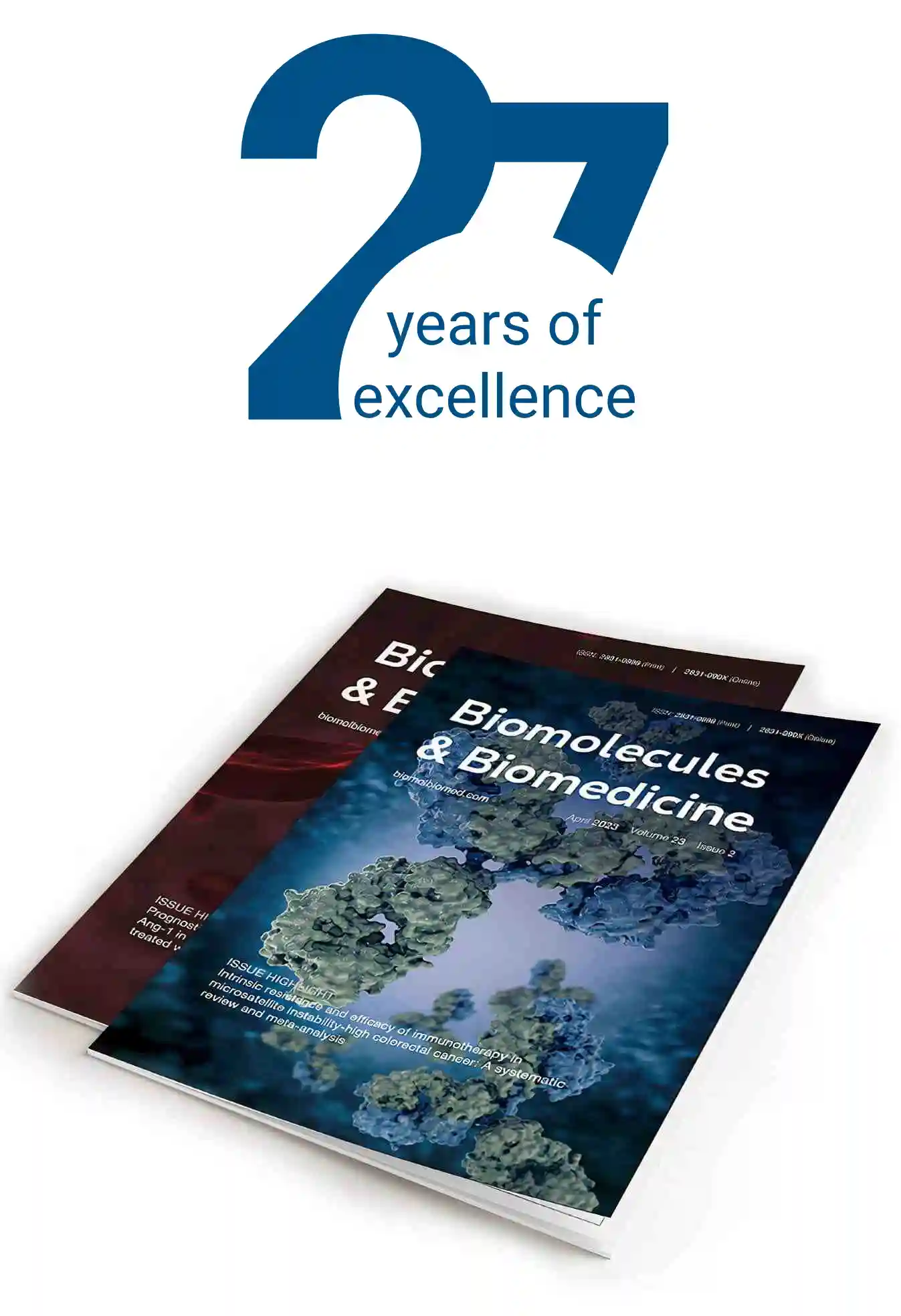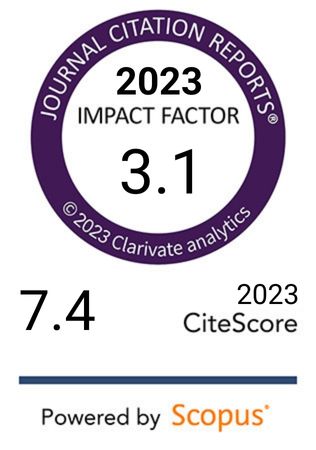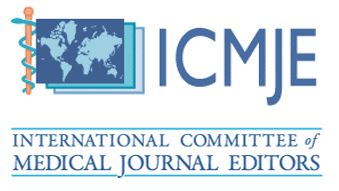Factors affecting the opinions of family physicians regarding generic drugs – a questionnaire based study
DOI:
https://doi.org/10.17305/bjbms.2015.1.134Keywords:
drug therapy, generic drugs, drug substitution, health care surveys, general practice/family medicineAbstract
A range of factors are believed to exert a negative influence on opinions of physicians about generic drugs.The aim of this study was to survey the opinions of primary care doctors on generics, and determine the factors which may affect them. A questionnaire comprising thirty eight questions was distributed among primary care doctors working in seventy out-patient clinics of the Lodzkie province, Poland, during the period of January 1, 2010 – December 31, 2010. A total of170 of 183 participants completed the survey (average age 48.5; 70.0% women): a 92.9%response rate. While 38.8% of physicians claimed that generics were worse than brand name drugs, 54.1% considered them to be better. However, 36.5% of the doctors did not choose generics for their own use. Two key opinions were identified among the responses concerning the effectiveness of generic drugs: use of generic drugs by the physician (p<0.001), and their opinion that pharmacists do inform patients about generic drugs (p<0.05). Although existing evidence confirms that generic and brand name drugs are equally effective, many physicians doubt this, which prevents them from being used as cost effective drug therapy. In order to increase healthcare savings through the use of generics, these factors should be addressed: for example, convincing a physician to adopt generics for personal use may be an efficient way to support more cost effective treatment of his patients.
Citations
Downloads
References
U.S. Food and Drug Administration. Available from: http://www.fda.gov/drugs/resourcesforyou/consumers/buyingusingmedicinesafely/understandinggenericdrugs/default.htm Accessed: October 5, 2014.
Note for guidance on the investigation of bioavailability and bioequivalence. The European Agency for the Evaluation of Medicinal Products. London 14.12.2000, CPMP/EWP/QWP/1401/98. Available from: http://www.ema.europa.eu/docs/en_GB/document_library/Scientific_guideline/2009/09/WC500003519.pdf Accessed: October 5, 2014.
Guidance for Industry. Bioavailability and Bioequivalence Studies for Orally Administered Drug Products — General Considerations. U.S. Department of Health and Human Services Food and Drug Administration Center for Drug Evaluation and Research (CDER) March 2003. Available from: http://www.fda.gov/downloads/Drugs/GuidanceComplianceRegulatoryInformation/Guidances/UCM070124.pdf Accessed October 5, 2014.
The Office of Medicinal Products, Medical Devices and Biocidal Products. Available at: http://en.urpl.gov.pl Accessed October 5, 2014.
Ustawa z dn. 12 maja 2011 o refundacji leków, środków spożywczych specjalnego przeznaczenia żywieniowego oraz wyrobów medycznych. [Act of May 12, 2011 on drugs reimbursement, food products of special nutritional use and medical products].
The Global Use of Medicines: Outlook Through 2015. Report by the IMS Institute for Healthcare Informatics. Available from: http://www.imshealth.com/deployedfiles/ims/Global/Content/Insights/IMS%20Institute%20for%20Healthcare%20Informatics/Global_Use_of_Medicines_Report.pdf Accessed: October 5, 2014.
Zore M, Harris A, Tobe LA, Siesky B, Januleviciene I, Behzadi J et al. Generic medications in ophthalmology. Br J Ophthalmol 2013;97(3):253-7. http://dx.doi.org/10.1136/bjophthalmol-2012-302245
Lewek P, Kardas P. Generic drugs: the benefits and risks of making the switch. J FamPract 2010;59:634-40. http://dx.doi.org/10.1016/j.seizure.2005.12.010
Banahan BF 3rd and Kolassa EM. A physician survey on generic drugs and substitution of critical dose medications. Arch Intern Med 1997;157(18):2080 – 2088. http://dx.doi.org/10.1001/archinte.1997.00440390066010
Shrank WH, Liberman JN, Fischer MA, Girdish C, Brennan TA, Choudhry NK. Physician perceptions about generic drugs. Ann Pharmacother 2011;45(1):31-8.
http://dx.doi.org/10.1345/aph.1P389
Hassali MA, Kong DCM and Stewart K. (2006) Generic medicines: perceptions of general practitioners in Melbourne, Australia. Journal of Generic Medicines 2006, 3(3):214–225.
http://dx.doi.org/10.1057/palgrave.jgm.4940122
García AJ, Martos F, Leiva F, Sánchez de la Cuesta F. [Genéricos: ¿buenos o malos? Conocimientos y actitudes de los médicos ante los medicamentosgenéricos]. Gac Sanit. 2003;17:144-9.
http://dx.doi.org/10.1016/S0213-9111(03)71712-9
Tsiantou V, Zavras D, Kousoulakou H, Geitona M, Kyriopoulos J. Generic medicines: Greek physicians' perceptions and prescribing practices. J Clin Pharm Ther 2009;34:547-54
http://dx.doi.org/10.1111/j.1365-2710.2009.01037.x
European Generic medicines Association. Available from: http://www.egagenerics.com/images/factsheet/IMS_deck_for_website.pdf Accessed Aug 7, 2013.
Statistical Yearbook of Republic of Poland. Central Statistical Office. Warsaw 2012.
Narodowy Fundusz Zdrowia. Available from: http://www.nfz-lodz.pl/index.php/dlapacjentow/gdzie-sie-leczyc Accessed August 7, 2013.
Central Statistical Office of Poland. Available from: http://stat.gov.pl Accessed October 5, 2014.
Heikkilä R, Mäntyselkä P, Hartikainen-Herranen K, Ahonen R. Customers' and physicians' opinions of and experiences with generic substitution during the first year in Finland. Health Policy 2007;82(3):366-74. http://dx.doi.org/10.1016/j.healthpol.2006.10.006
Hassali MA, Stewart K, Kong DC. A national survey on knowledge and perceptions of senior medical students in Australia about generic medicines. Med J Aust 2008 21;188(2):123-4.
Kesselheim AS, Stedman MR, Bubrick EJ, Gagne JJ, Misono AS, Lee JL, et al. Seizure outcomes following the use of generic versus brand-name antiepileptic drugs: a systematic review and meta-analysis. Drugs 2010;70(5):605-21. http://dx.doi.org/10.2165/10898530-000000000-00000
Dentali F, Donadini MP, Clark N, Crowther MA, Garcia D, Hylek E, et al. Warfarin associated research projects and other endeavors (WARPED) consortium. Brand name versus generic warfarin: a systematic review of the literature. Pharmacotherapy 2011;31(4):386-93.
http://dx.doi.org/10.1592/phco.31.4.386
Kesselheim AS, Misono AS, Lee JL, Stedman MR, Brookhart MA, Choudhry NK, et al. Clinical equivalence of generic and brand-name drugs used in cardiovascular disease: a systematic review and meta-analysis. JAMA 2008;300(21):2514-26. http://dx.doi.org/10.1001/jama.2008.758
Hodges B. Interactions with the pharmaceutical industry: experiences and attitudes of psychiatry residents, interns and clerks. CMAJ 1995;153(5):553-9.
Peay MY, Peay ER. The role of commercial sources in the adoption of a new drug. SocSciMed 1988;26(12):1183-9. http://dx.doi.org/10.1016/0277-9536(88)90149-9
Wazana A. Physicians and the pharmaceutical industry: is a gift ever just a gift? JAMA 2000;283(3):373-80. http://dx.doi.org/10.1001/jama.283.3.373
McGettigan P, McManus J, O'Shea B, Chan R, Feely J. Low rate of generic prescribing in the Republic of Ireland compared to England and Northern Ireland: prescribers' concerns. Ir Med J 1997;90(4):146-7.
Rozporządzenie Ministra Zdrowia z dn. 8.03.2012 w sprawie recept lekarskich. [Regulation of the Minister of Health of March 8, 2012 on medical prescriptions]
Lagarce L, Lusson-Brisset C, Bruhat C, Diquet B, Lainé-Cessac P. How practitioners view generic drugs: an opinion study from general practitioners in Maine-et-Loire (France). Therapie 2005;60:67-74. http://dx.doi.org/10.2515/therapie:2005009

Downloads
Additional Files
Published
Issue
Section
Categories
License
Copyright (c) 2015 Bosnian Journal of Basic Medical Sciences

This work is licensed under a Creative Commons Attribution 4.0 International License.
How to Cite
Accepted 2014-10-31
Published 2014-12-17









